Input interpretation

3, 5-diiodosalicylic acid
Chemical names and formulas
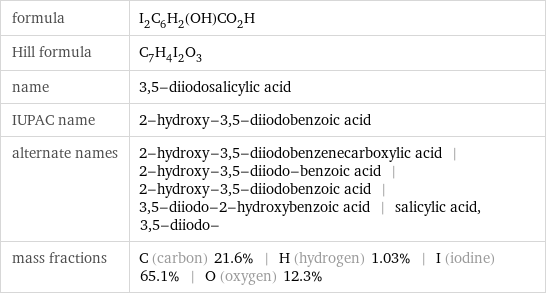
formula | I_2C_6H_2(OH)CO_2H Hill formula | C_7H_4I_2O_3 name | 3, 5-diiodosalicylic acid IUPAC name | 2-hydroxy-3, 5-diiodobenzoic acid alternate names | 2-hydroxy-3, 5-diiodobenzenecarboxylic acid | 2-hydroxy-3, 5-diiodo-benzoic acid | 2-hydroxy-3, 5-diiodobenzoic acid | 3, 5-diiodo-2-hydroxybenzoic acid | salicylic acid, 3, 5-diiodo- mass fractions | C (carbon) 21.6% | H (hydrogen) 1.03% | I (iodine) 65.1% | O (oxygen) 12.3%
Lewis structure

Draw the Lewis structure of 3, 5-diiodosalicylic acid. Start by drawing the overall structure of the molecule, ignoring potential double and triple bonds: Count the total valence electrons of the carbon (n_C, val = 4), hydrogen (n_H, val = 1), iodine (n_I, val = 7), and oxygen (n_O, val = 6) atoms: 7 n_C, val + 4 n_H, val + 2 n_I, val + 3 n_O, val = 64 Calculate the number of electrons needed to completely fill the valence shells for carbon (n_C, full = 8), hydrogen (n_H, full = 2), iodine (n_I, full = 8), and oxygen (n_O, full = 8): 7 n_C, full + 4 n_H, full + 2 n_I, full + 3 n_O, full = 104 Subtracting these two numbers shows that 104 - 64 = 40 bonding electrons are needed. Each bond has two electrons, so in addition to the 16 bonds already present in the diagram add 4 bonds. To minimize formal charge oxygen wants 2 bonds and carbon wants 4 bonds. Identify the atoms that want additional bonds and the number of electrons remaining on each atom: Fill in the 4 bonds by pairing electrons between adjacent highlighted atoms. Note that the six atom ring is aromatic, so that the single and double bonds may be rearranged: Answer: | |
3D structure

3D structure
Basic properties
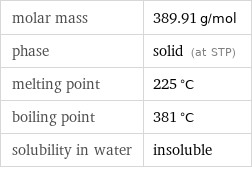
molar mass | 389.91 g/mol phase | solid (at STP) melting point | 225 °C boiling point | 381 °C solubility in water | insoluble
Units

Hydrophobicity and permeability properties

predicted LogP hydrophobicity | 3.13 predicted LogS | -3.4
Basic drug properties

approval status | experimental | small molecule
Solid properties (at STP)

vapor pressure | 2×10^-6 mmHg (at 25 °C)
Units

Thermodynamic properties
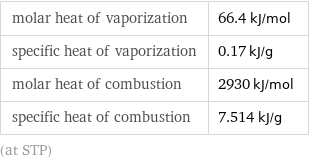
molar heat of vaporization | 66.4 kJ/mol specific heat of vaporization | 0.17 kJ/g molar heat of combustion | 2930 kJ/mol specific heat of combustion | 7.514 kJ/g (at STP)
Chemical identifiers
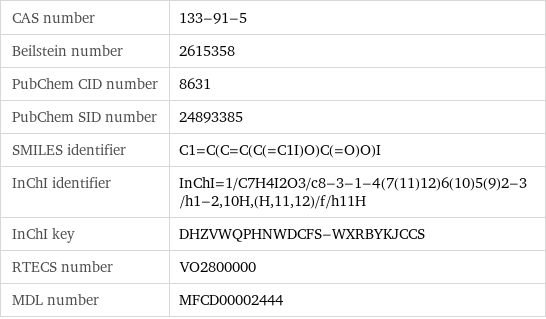
CAS number | 133-91-5 Beilstein number | 2615358 PubChem CID number | 8631 PubChem SID number | 24893385 SMILES identifier | C1=C(C=C(C(=C1I)O)C(=O)O)I InChI identifier | InChI=1/C7H4I2O3/c8-3-1-4(7(11)12)6(10)5(9)2-3/h1-2, 10H, (H, 11, 12)/f/h11H InChI key | DHZVWQPHNWDCFS-WXRBYKJCCS RTECS number | VO2800000 MDL number | MFCD00002444
NFPA label

NFPA label
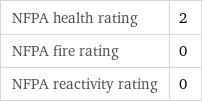
NFPA health rating | 2 NFPA fire rating | 0 NFPA reactivity rating | 0
Safety properties

flash point | 184 °C

DOT numbers | 2811
Toxicity properties

RTECS classes | agricultural chemical and pesticide | drug